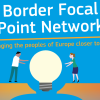WHAT:
Through the cooperation on various areas such as transport, tourism, environment, education, and the mobilisation of collective intelligence, the Eurometropolis aims at an integrated territorial development.
Among the key steps towards this integration:
- Create a genuine cross-border employment market
- Invest in human capital through cooperation in the field of education and research
- Develop cross-border/shared business parks
- Develop a more integrated public transport system
- Develop the blue network as a vector for accessibility (e.g. create a network between logistics platforms, promote a modal shift from transport by road to transport by water)
- Support the targets for an energy-neutral Eurometropolis
WHERE:
The 3,500 km² large, bi-lingual region embraces the Lille metropolis, the southern and central parts of West Flanders, and Western Hainaut.
HOW:
It brings together all French and Belgian government levels via 14 institutions, working together to erase the "border effect" and make day-to-day life easier for its 2.1 million inhabitants.
RESULTS:
The EGTC acts as a hub for all cross-border information, activities and services, supporting their exploitation and development and sometimes even adapting them. Institutions, companies, artists, associations and clubs, various organisations, etc. are all invited to coordinate and pool their projects, allowing them to speak with one voice. Six cooperation bodies have been set up within Eurométropole: The Presidency, the Assembly, the Board, the Cross-Border Agency, the Thematic Working Groups and the Conference of Mayors and Burgomasters. Aware of the regions cultural particularity, the Eurometropolis has adopted two fundamental operating principles. Firstly, each body respects the double parity between France and Belgium and hence between French-speaking and Dutch-speaking individuals. Finally, the application of bilingualism is guaranteed.
- Logige sisse kommentaaride postitamiseks
- Sildid
- institutional matters

